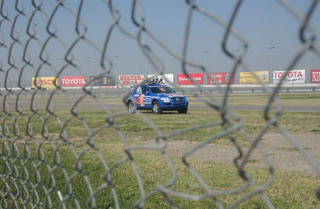 Reuters | Stanford team clinches top spot in robot desert race
Reuters | Stanford team clinches top spot in robot desert race
So they did it! In a Volkswagen, nogal. Or should I say, with a Volkswagen, since no-one was actually driving it. No-one I know, anyway. Well done! Damn, last time these guys couldn't get beyond 10km and now they did 132 miles (what's that in real units?) in 7 hours.
Go to Grand Challenge and click on the Win webcast. Very interesting. Stanley, for it is the winner's name, got through the whole course without a scratch. Way to go, Stan.
More on Stan:
The Stanford Vehicle (nicknamed "Stanley") is based on a stock, Diesel-powered Volkswagen Touareg R5, modified with full body skid plates and a reinforced front bumper. Stanley is actuated via a drive-by-wire system developed by Volkswagen of America's Electronic Research Lab.
So not any old Volkswagen. There I was expecting a 1959 Beetle (four wheel drive, mind you).
All processing takes place on seven Pentium M computers, powered by a battery-backed, electronically-controlled power system. The vehicle incorporates measurements from GPS, a 6DOF inertial measurement unit, and wheel speed for pose estimation.
Now, I wonder what my Lego rover will do with seven Pentium M computers (apart from not moving under all the weight...shit...).
While the vehicle is in motion, the environment is perceived through four laser range finders, a radar system, a stereo camera pair, and a monocular vision system. All sensors acquire environment data at rates between 10 and 100 Hertz. Map and pose information are incorporated at 10 Hz, enabling Stanley to avoid collisions with obstacles in real-time while advancing along the 2005 DARPA Grand Challenge route.